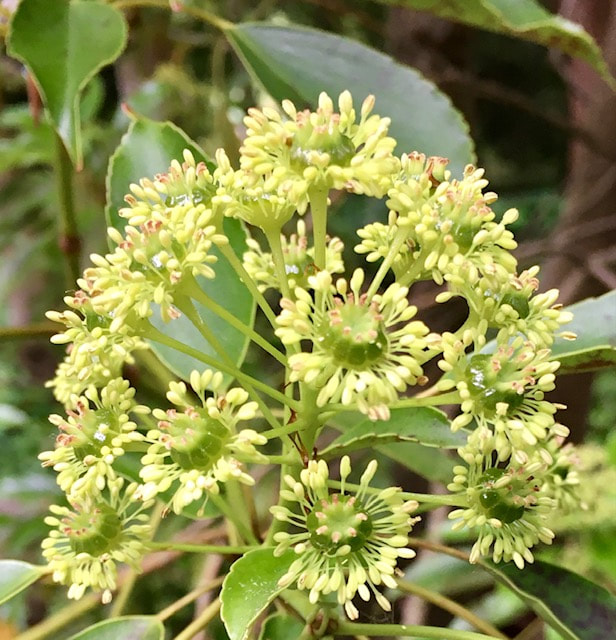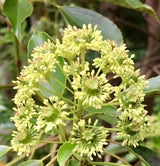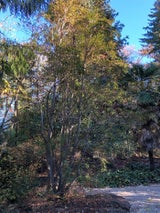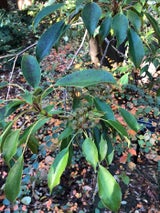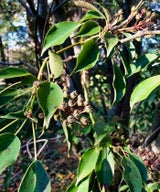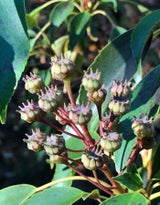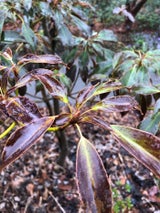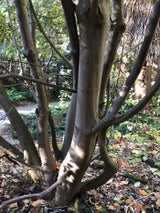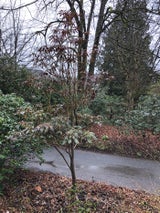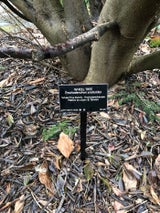- Plant IDs
- >
- ID By Type
- >
- Trees
- >
- Evergreen Trees
- >
- Trochodendron aralioides
Trochodendron aralioides
Common name: Wheel Tree
Trochodendron aralioides, a slow-growing, broadleaf evergreen tree or large shrub, is native to the mountain forests of Japan, Taiwan, and Korea. It is the sole living species in the genus Trochodendron. A very interesting fact about T. aralioides is that the wood lacks vessels for water conduction and resembles the wood of conifers more than that of most broadleaf trees. It uses specialized xylem cells (tracheids) to transport minerals and water. In its native habitat, T. aralioides grows to twenty metres (sixty feet) or more in height, but in cultivated gardens it tends to grow much smaller. Wheel tree is intolerant of drought and grows best in dappled shade.
T. aralioides flowers are unique. The yellowish-green flowers have no petals or sepals. The flowers bloom from mid to late spring, and each raceme has about ten to twenty flowers. Each flower in the cluster has stamens that stick out like the spokes of a wheel. The leaves of the wheel tree grow in clusters near the tips of the branches in a whorled fashion. They are shiny dark green above and paler on the undersides.
The genus name Trochodendron is derived from the Greek. Trochos means 'wheel' and dendron means 'tree,' alluding to the stamens that spread out like the spokes of a wheel to form the flower. The specific epithet is for its resemblance to plants in the genus Aralia. T. aralioides was described and illustrated in 1839 by Philipp Franz von Siebold and J. F. Zuccarini in Flora Japonica.
A specimen of Trochodendron aralioides planted in 1977 can be found in Bed 130A near the Fern Dell. There is also a young one in the Japanese Collection. Most of the photos are of the tree in Bed 130A.
Text and most photos by Kumi Sutcliffe
Flower photo by Hughie Jones
